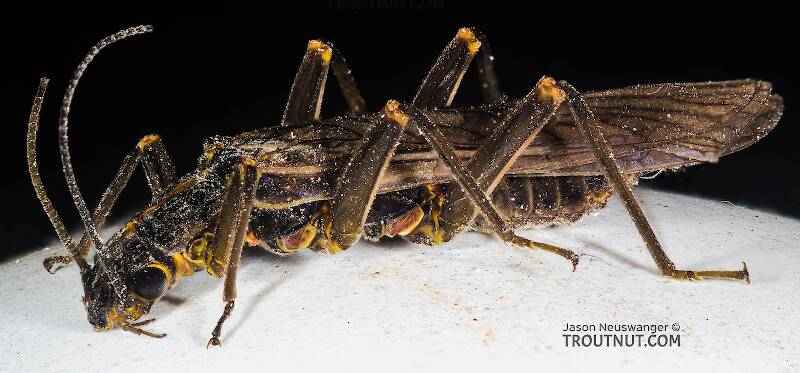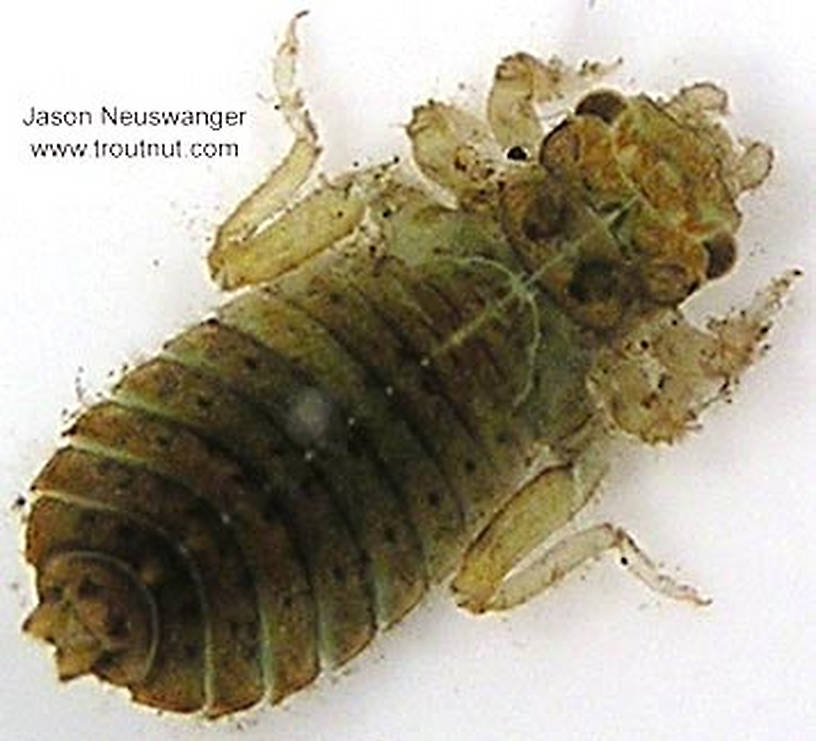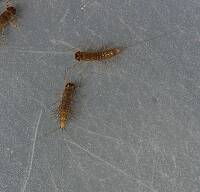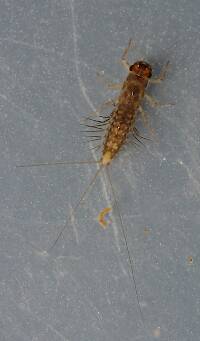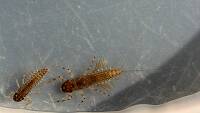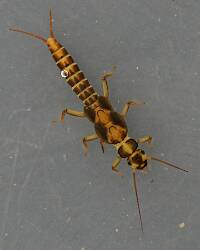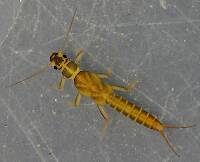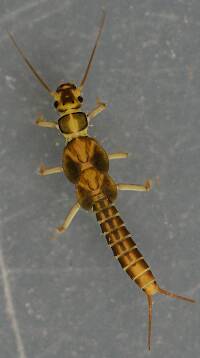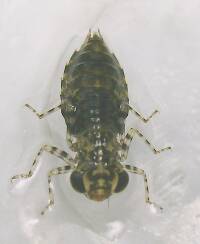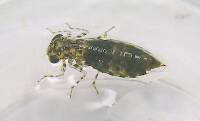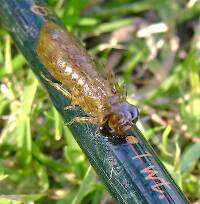
Hex Mayflies
Hexagenia limbata
The famous nocturnal Hex hatch of the Midwest (and a few other lucky locations) stirs to the surface mythically large brown trout that only touch streamers for the rest of the year.
Featured on the forum

Troutnut is a project started in 2003 by salmonid ecologist Jason "Troutnut" Neuswanger to help anglers and
fly tyers unabashedly embrace the entomological side of the sport. Learn more about Troutnut or
support the project for an enhanced experience here.
Troutnabout
Posts: 20
Posts: 20
Troutnabout on Sep 22, 2006September 22nd, 2006, 10:00 am EDT
I need some help with identification. I found a yellow opaque nymph in a river in north Carolina. Body characterisitcs are like the drsgon fly you show here but the color was yellow. What do you think?
GONZO on Sep 22, 2006September 22nd, 2006, 12:24 pm EDT
It probably was a Dragonfly nymph. I often turn up small yellow dragonfly nymphs in the streams I fish. I've assumed they were immature and that the yellow color reflected a recent molt; however, because the small ones almost always seem to be yellow (as opposed to the large mottled olive nymphs I find emerging on rocks along the same streams), I'm not sure about that. Jason? Roger?
Troutnabout
Posts: 20
Posts: 20
Troutnabout on Sep 22, 2006September 22nd, 2006, 1:31 pm EDT
Gonzo: Thanks for your response. How little is little? The nymph I found was about 7/8 mm.
GONZO on Sep 22, 2006September 22nd, 2006, 2:15 pm EDT
I have found them as small as you describe. I'd estimate that about 8-15mm is the range I see most. I've rarely picked up the large olive nymphs in the little pocket seine I always carry, but I see quite a few emerging just like stoneflies around the end of May through June.
One additional thought about the little yellow ones--if they are molts, perhaps the reason they get captured so often is that they are relatively helpless. The regular dragonfly nymphs may be too damn swift to get caught very often. Still all guesswork, though.
One additional thought about the little yellow ones--if they are molts, perhaps the reason they get captured so often is that they are relatively helpless. The regular dragonfly nymphs may be too damn swift to get caught very often. Still all guesswork, though.
Troutnut on Sep 22, 2006September 22nd, 2006, 2:38 pm EDT
Yeah, they're probably dragonfly nymphs. I've found them in a range of light olive/tan or "yellowish" colors. It depends on the species and age of the nymph.
The old ones aren't all that hard to catch. Some dragonfly nymphs can scoot around alright, but they're all pretty slow compared to traditional "fast" aquatic insects like scuds or swimming mayfly nymphs.
The old ones aren't all that hard to catch. Some dragonfly nymphs can scoot around alright, but they're all pretty slow compared to traditional "fast" aquatic insects like scuds or swimming mayfly nymphs.
Jason Neuswanger, Ph.D.
Troutnut and salmonid ecologist
Troutnut and salmonid ecologist
GONZO on Sep 22, 2006September 22nd, 2006, 2:49 pm EDT
Thanks Jason. I manage to catch plenty of scuds and Isonychia nymphs in the seine, so I guess that shoots the speed theory.
Troutnabout
Posts: 20
Posts: 20
Troutnabout on Sep 22, 2006September 22nd, 2006, 2:50 pm EDT
Gonzo and Jason: Thanks for the help! I was quite bewilderd on the stream today when I discovered that nymph. This is all new to me but very facinationg. It's nice to have others experience and knowledge so easily available.
Quick Reply
Related Discussions
Topic
Replies
Last Reply
2
Oct 4, 2006
by GONZO
by GONZO
1
May 11, 2007
by Troutnut
by Troutnut
2
Nov 4, 2012
by Aszat
by Aszat


